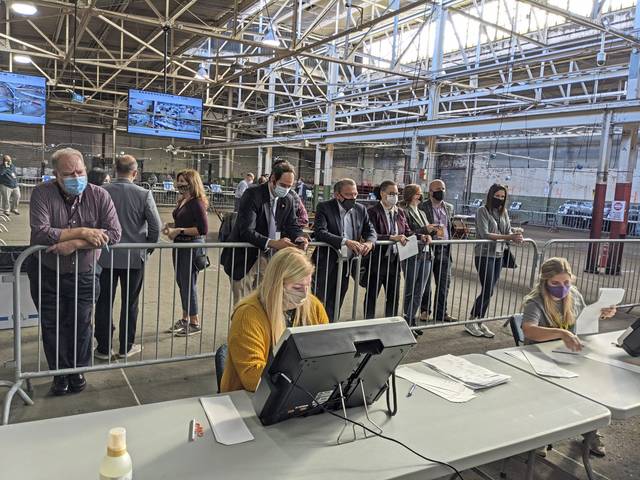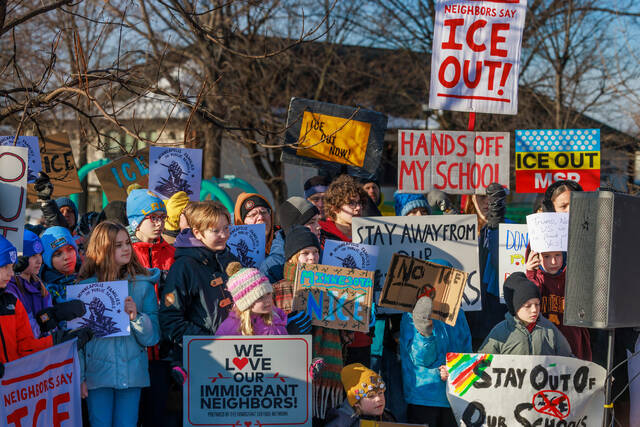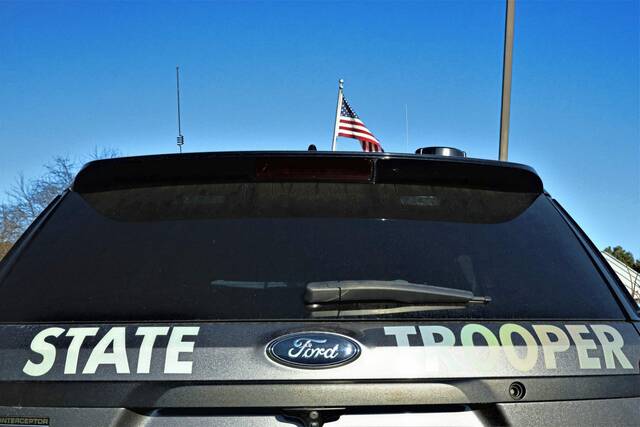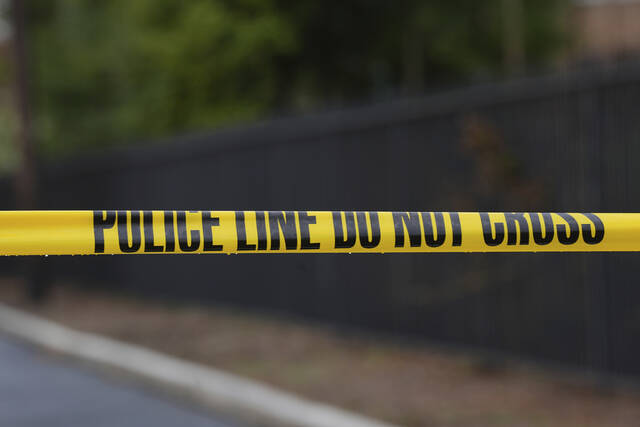The Trump campaign’s most recent attempt to discredit Pennsylvania’s election results is more of the same, experts said — unfounded allegations with no proof to back them up.
“There’s no proof of widespread fraud (or even a little bit of fraud),” wrote Rick Hasen, an expert in election law who teaches at the University of California, Irvine.
In the 86-page federal complaint filed late Monday in the middle district courthouse in Williamsport, the Trump campaign is suing Pennsylvania Secretary of State Kathy Boockvar and the boards of elections in Allegheny, Centre, Chester, Delaware, Montgomery, Northampton and Philadelphia counties.
It alleges equal protection violations, including that there was an illegal, two-tiered voting system that treated voters who submitted mail-in ballots differently than those who voted in person, devaluing in-person votes. Specifically, the lawsuit alleges that in-person voters were required to show identification while mail-in voters were not.
In Allegheny County, voters cast 335,573 mail-in ballots. Statewide, that number was 2.6 million.
“Defendants, the very officials charged with ensuring the integrity of the election in Pennsylvania, have so mismanaged the election process that no one — not the voters and not President Trump’s campaign — can have any faith that their most sacred and basic rights under the United States Constitution are being protected,” the lawsuit said. “The evidence is plain that defendants have been and are blatantly violating the protections and procedures, including those enacted by the Pennsylvania General Assembly, vitally necessary to ensure that the votes of the citizens of Pennsylvania are not illegally diluted by invalid ballots and that the election is free and fair.”
The lawsuit seeks an emergency order prohibiting defendants from certifying the results of the general election; or in the alternative, from certifying any results that include the tabulation of absentee or mail-in ballots which do not comply with the election code, or that were improperly cured.
The lawsuit alleges that “almost every critical aspect” of Pennsylvania’s election was shrouded in secrecy and alludes to fraud, but provides no concrete examples of it.
Kermit Roosevelt, a constitutional law scholar at the University of Pennsylvania, said he believes the equal protection challenge is unsound.
“There are always county-by-county variations,” he said. “To the extent we can quantify the effect of these differences, I doubt it would affect the outcome.”
Roosevelt said that the plaintiffs don’t try to quantify the violation. Instead, he said, it looks as though the Trump campaign is asking simply that the certification of the result be enjoined, presumably hoping that then the Pennsylvania Legislature will appoint electors.
“That would be an astonishing assault on democracy, and I hope and believe the federal courts would not enable it,” Roosevelt said.
In his online “Election Law Blog,” Hasen called the lawsuit’s equal protection claim “ludicrous.”
He noted the process for submitting mail-in ballots was in place for months prior to the election and that the campaign could have sued over it prior to Election Day. The Republican-controlled state Legislature approved mail-in voting in October 2019, allowing all qualified electors to vote by mail without having to provide a reason.
Having different procedures for in-person and mail-in voting does not create an equal protection violation, Hasen said.
Were the equal protection violations to succeed, he said, it would make mail-in voting across the country unconstitutional.
Hasen called the other claims in the lawsuit “retreads” of issues that already have been argued.
Specifically with regard to Allegheny County, the lawsuit alleges that there, and in Philadelphia County, political party and candidate observers were not provided meaningful access to watch the canvassing process — as it was conducted in large convention centers in which the observers did not have full access.
Between the two counties, 682,479 mail-in and absentee ballots were processed.
“These are unprecedented numbers in Pennsylvania’s elections history,” the lawsuit said.
Allegheny County spokeswoman Amie Downs said in a statement that the elections process has been “even-handed and open.”
Beginning at 7 a.m. on Election Day, any authorized representative of a party or candidate was given access to view the canvassing process, she said.
“No party or candidate was treated differently, and representatives from the Democratic, Libertarian and Republican party were all part of these proceedings,” she said. “All individuals were free to move back and forth between rooms and observer areas, were frequently provided status updates, and staff were available for questions from those individuals.
“At no time were canvassing operations conducted without observers having the opportunity to see the process and the counting.”
Other allegations in the complaint were that voters in Democratic-controlled counties were given the opportunity to cure defective mail-in ballots before Election Day.
While the lawsuit is lacking in terms of specific allegations of widespread fraud, it does allege that at least two counties had suspected instances of mail-in ballot fraud: In Fayette County, a software error with the state’s SURE system caused some voters to receive duplicate ballots; and in Luzerne County, a temporary seasonal elections workers discarded nine military ballots that had been received — seven of which were cast for Trump.
“In Allegheny County, plaintiffs have received reports that poll workers were observing voters vote provisionally in such a way that the poll worker could determine which candidates the elector voted on their provisional ballot,” the lawsuit said.
It does not include any details of those reports.
Among the other issues being argued is whether the state Supreme Court’s three-day extension for receipt of mail-in ballots is legal. Trump has asked the U.S. Supreme Court to weigh in on that.
Roosevelt said that while he does not find the claims to be legally sound, he can envision a court accepting the claims about late-arriving mail-in ballots or the curing of ballots, and ordering those votes to be voided.
Both he and Hasen said that even if those ballots aren’t counted, it wouldn’t change the results. Biden is ahead by 45,000 votes, and across Pennsylvania, the number of ballots received after 8 p.m. Nov. 3 and before 5 p.m. Nov. 6 is about 7,800. In Allegheny County, that number is 947.
“But that would not affect the outcome — the late-arriving ballots have been segregated and not even included in the current vote tally, and the cured ballots are less than the margin,” Roosevelt said.








